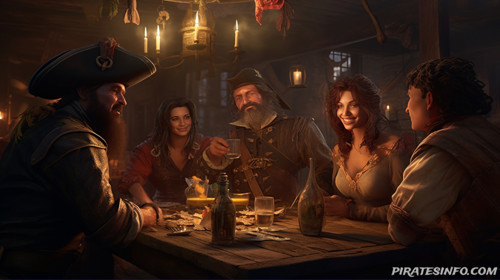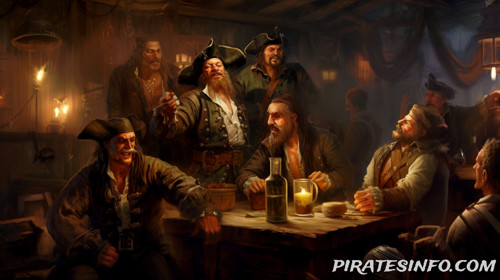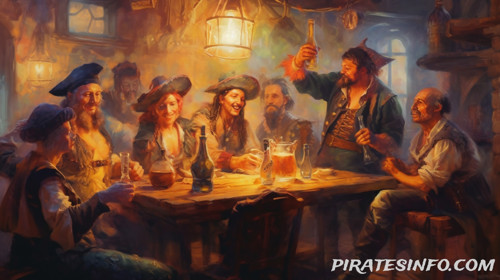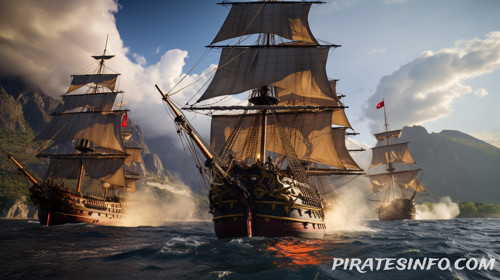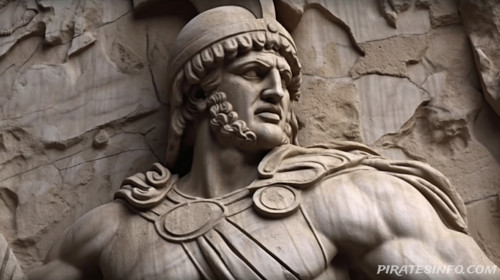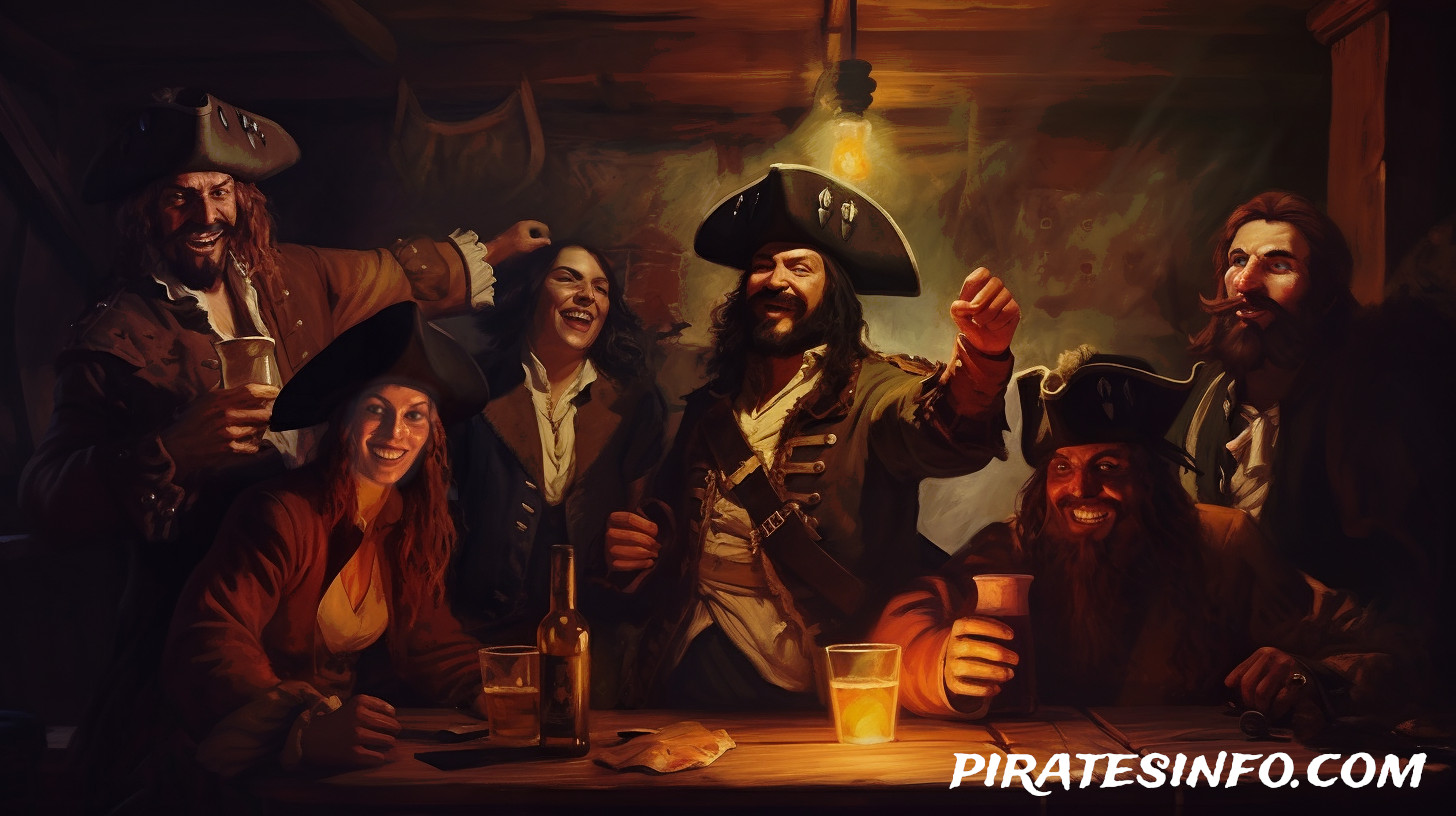
Pirates! Fact and Legend
Welcome to the world of piracy, a world as fascinating as it is fearsome. It's a world that has been at the heart of countless tales of high-seas adventure, swashbuckling courage, courageous pirates, and treasure beyond imagination.
We've charted a course through the vast seas of the history of pirates and divided our site into three distinct sections for your maritime adventure:
-
The History of Piracy: Delve into the tumultuous tides of time, tracing piracy's roots from its earliest days to its notorious golden age. Understand the forces that shaped these sea-bound outlaws and the world they roamed.
-
Famous Pirates: Meet the legends—the cunning, the fearsome and the audacious. From the fiery beard of Blackbeard to the unmatched valor of Anne Bonny, discover the real faces behind these fabled faces. Don't forget our dedicated Female Pirates section!
-
Pirate Legends, Life and Culture: Beyond the facts lie the tales—stories of cursed treasures, ghost ships, and whispered sea shanties. Untangle myth from reality and explore the vibrant tapestry of the folklore of pirates. Also, this is the place to learn to talk like a pirate and other fun stuff.
Female Pirates
Anne Bonny, Mary Read, and many more.
Blackbeard (Edward Teach)
Arguably the most fascinating pirate.
Captain Kidd (William Kidd)
This privateer met a brutal and end.
Pirate Buried Treasure
Digging up the dirt on pirates' stash.
"Arrr!" Explained
Every pirate's favorite word.
Pirate Parrots
Pirates' chirpy sidekicks.
Talk Like a Pirate Day
When grog meets grammar.
How to Talk Like a Pirate
Not just for the high seas anymore.
Pirate Speak
It's not what you say, but how you say it.
Female Pirate Herstory
Women who ruled the high seas.
Walking the Plank and Torture
The darker side of the pirate's code.
The Pirate’s Life at Sea
Sunsets, storms, and sea monsters.
Famous Pirate Ships
Legends that cut through waves and time.
Pirate Shipwrecks
Tales of lost booty get a tad waterlogged.
Pirate Flags and Symbols:
Dark whispers of the Jolly Roger.
Ancient Piracy
Antiquity to Middle Ages.
Golden Age of Piracy
A legendary time of adventure.
Modern Piracy
Yes, pirates still plaque the seas.
In simple terms, piracy involves robbery, criminal violence, or other acts of mischief carried out at sea. It's been around almost as long as people have sailed the oceans, with documented incidents going back more than two millennia. It's a part of our shared history that continues to captivate us, from stories of legendary figures like the pirates Edward Teach (better known as Blackbeard) and William Kidd to the vivid portrayals of pirates in literature and film.
But the reality of piracy is far more complex and often, far less romantic. It has shaped empires, influenced global trade routes, and even challenged social norms of its time. As we delve into this world, we'll encounter infamous characters, explore the societies they created, and discover the impact pirates had on the world.
So, whether you're an aspiring maritime historian, a fan of pirate lore, or simply curious about these rebels of the sea, we invite you to hoist the anchor and set sail with us into the riveting saga of piracy. Stick around - it's going to be an exciting voyage!
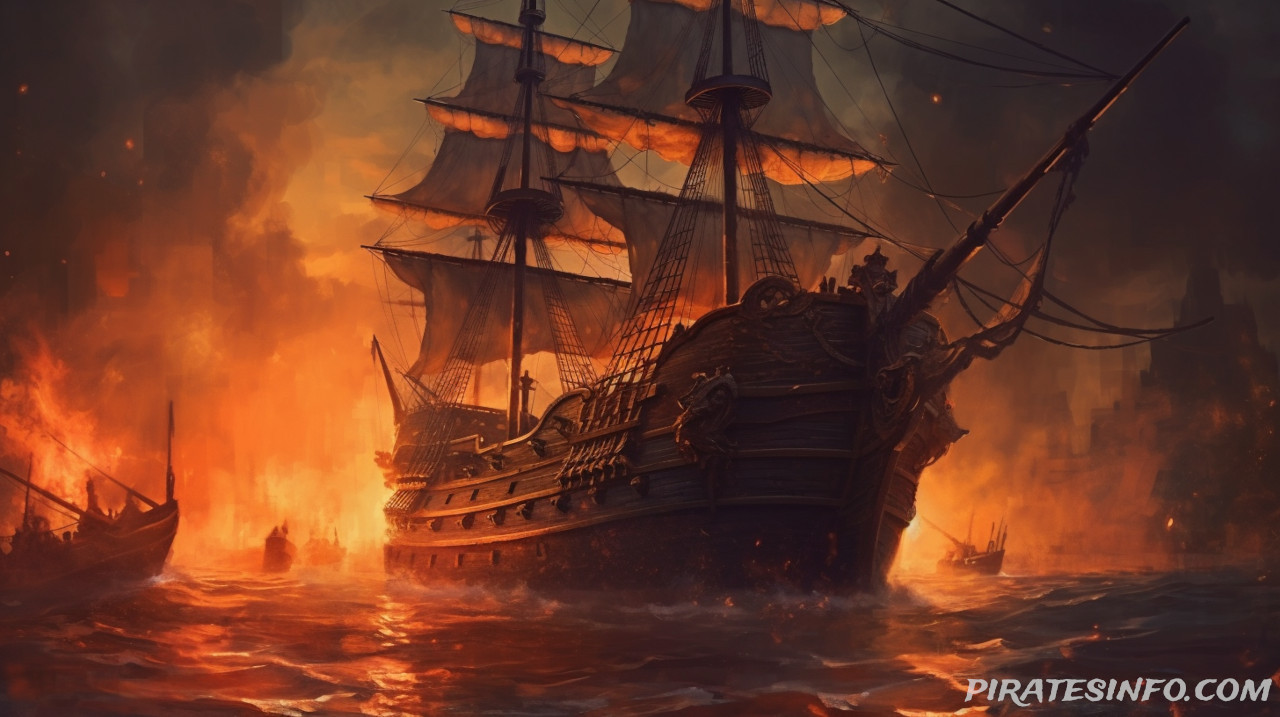
Setting Sail: The Early Days of Piracy
Piracy is as old as seafaring itself. It harks back to the days when mankind first dared to venture beyond the horizon, guided by the stars and a relentless spirit of exploration. As trade routes developed and precious goods began to flow across the seas, the stage was set for the first pirates to make their mark.
The earliest recorded acts of piracy are found in the annals of ancient history. The Mediterranean, often seen as the cradle of civilization, also served as a cradle for piracy. The ancient Egyptians, Greeks, and Romans all had their encounters with sea raiders. These early pirates were opportunistic, preying on merchant ships carrying treasures from far-off lands.
In the East, the maritime history of Asia tells a similar tale. Pirates in the China Seas were a thorn in the side of ancient dynasties, disrupting trade routes and causing havoc. They hailed from various backgrounds - some were poor fishermen seeking a better life, others were rebels resisting the state's authority. The story wasn't much different in the rest of the world - wherever there was sea trade, pirates were not far behind.
These early days of piracy laid the groundwork for what was to come. They set the stage for the Golden Age of Piracy, a time when pirates became an undeniable force in shaping the course of history. But that's a tale for another time. For now, let us turn the ship's wheel and steer towards understanding the locations these audacious individuals often called home, in our next section: "Pirate Strongholds: Notable Piracy Centers". Join us, and let's continue our thrilling journey through the annals of piracy.
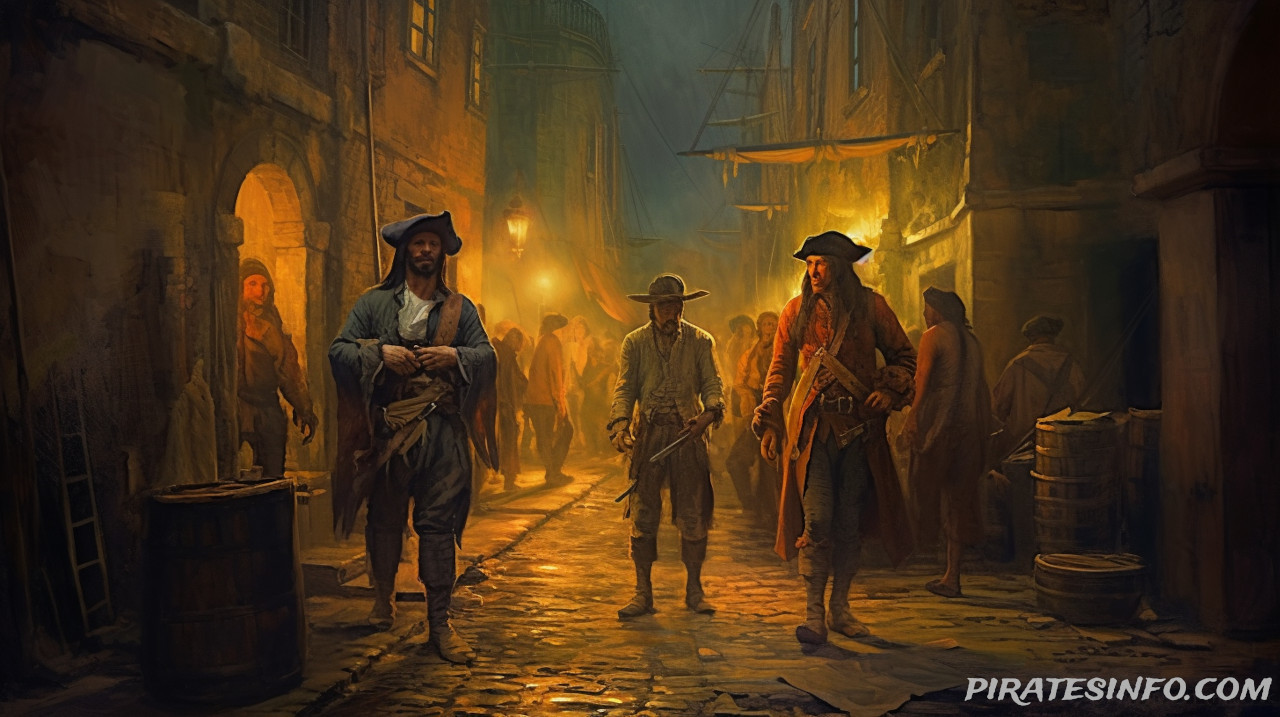
Pirate Strongholds: Notable Piracy Centers
No tale of piracy can be spun without dropping anchor at the infamous ports and hideouts that offered sanctuary to these maritime outlaws. From the azure waters of the Caribbean to the treacherous coasts of North Africa, each piracy hotspot harbored its unique brand of lawlessness and adventure.
The Caribbean, with its scattered archipelago and bustling trade routes, was the poster child of the Golden Age of Piracy. It was here that legends like Blackbeard and Calico Jack carved their names into piratical lore, with Nassau in the Bahamas serving as an unofficial pirate capital. This tropical paradise was a hotbed for piracy due to a combination of factors - the abundance of wealthy merchant ships, the complex network of islands perfect for hideouts, and the political instability caused by warring colonial powers.
Venture across the Atlantic, and you'll find the Barbary Coast of North Africa. The corsairs of this region, also known as Barbary Pirates, were notorious for their slave raids on European coastal towns. Their strongholds in Algiers, Tunis, and Tripoli became centers of power, even influencing geopolitics through their actions.
Let's also cast our gaze towards the East, where the China Seas bore witness to a different breed of pirates. The coastal provinces of Guangdong and Fujian were particularly infamous, with pirate fleets operating with such power that they often rivaled the imperial navy. One of the most formidable pirate confederacies in history was established here by Zheng Yi and his wife, Zheng Yi Sao, commanding over a thousand ships and tens of thousands of pirates.
However, these strongholds didn't just serve as bases for plunder and pillage. They were also communities with their own social norms and structures. Pirates, despite their lawless reputation, often lived under surprisingly democratic systems, with codes of conduct, elected leaders, and even a form of social security. The pirate haven of Tortuga, off the coast of Haiti, was one such example of a self-governing pirate society.
In our next section, we'll delve deeper into these social structures and uncover the surprisingly progressive world of "Pirate's Life: The Social Structure of Piracy". So, keep your spyglass at hand as we navigate through these thrilling waters of pirate history.
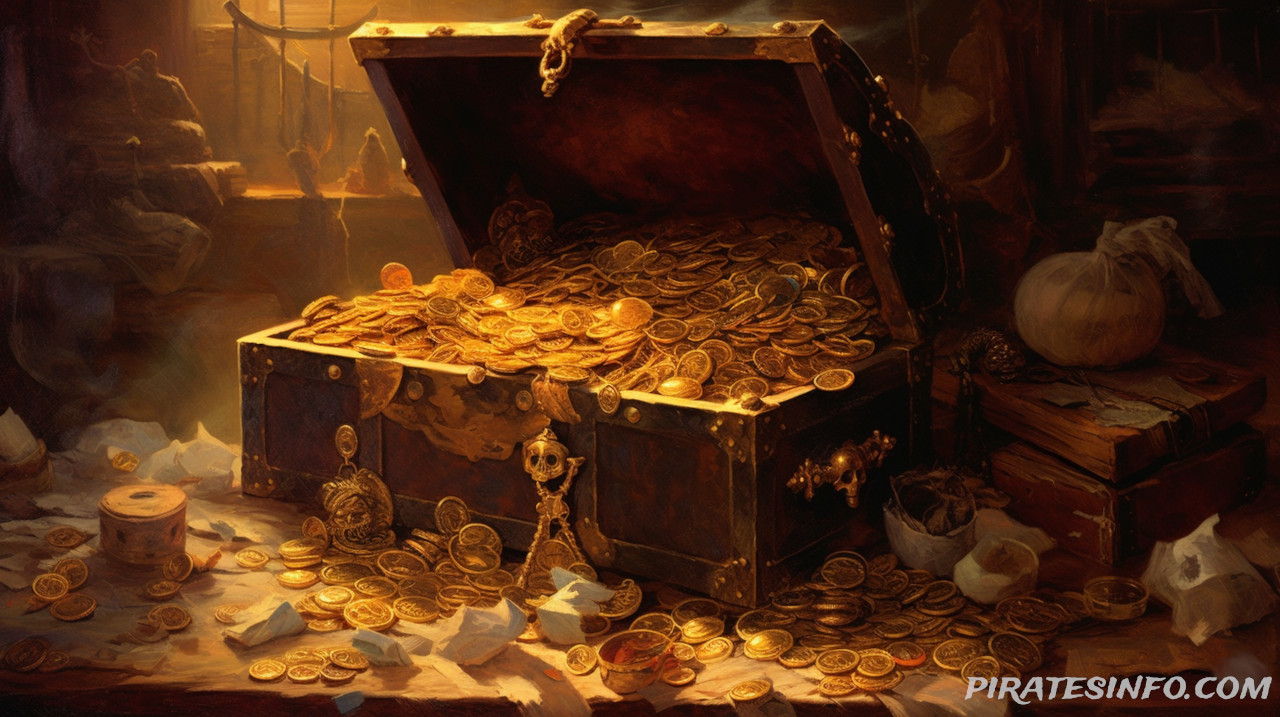
Pirate Life: The Social Structure of Piracy
Stereotypes often paint pirates as unruly rogues living in a world devoid of order, but the reality couldn't be further from this image. Pirate society was, in fact, surprisingly structured, and it's within this structure that we find some of the most fascinating aspects of pirate life.
At the heart of many pirate crews was a democratic system that would make a modern-day politician blush. Captains were often elected by their crew and could be deposed if they were seen as unfit or unfair. This was a stark contrast to the rigid hierarchies found in naval and merchant vessels of the time, where captains ruled with an iron fist.
The pirates' code, or articles, was another cornerstone of pirate society. Contrary to popular belief, these were not guidelines but binding contracts agreed upon by every crew member. They outlined everything from division of loot and compensation for injuries, to rules for combat and punishments for breaking the code. And woe betide the pirate who dared to cross the line - penalties ranged from marooning to death.
One of the most notable aspects of pirate society was its relative social equality. Many pirate crews were remarkably diverse, with men (and sometimes women) of different races and nationalities fighting side by side. Some historians even suggest that pirate ships were among the first truly multicultural societies.
Even in the East, pirates built intricate networks of power, with pirate chieftains acting as de facto rulers of coastal communities. They levied taxes, provided protection, and even enacted their own laws. The formidable pirate queen Zheng Yi Sao, who commanded a fleet larger than many nations' navies, was a classic example of such pirate governance.
Pirate society was not a utopia, far from it. It was brutal, dangerous, and short-lived for many. But within its rough exterior, there were glimmers of progressiveness that challenged the social norms of the era.
In our next section, "Walking the Plank: The Downfall of Piracy," we'll explore how these free societies eventually met their end. The seas might be getting rougher, but the journey is far from over. Stick with us as we sail towards the closing chapters of our pirate saga.
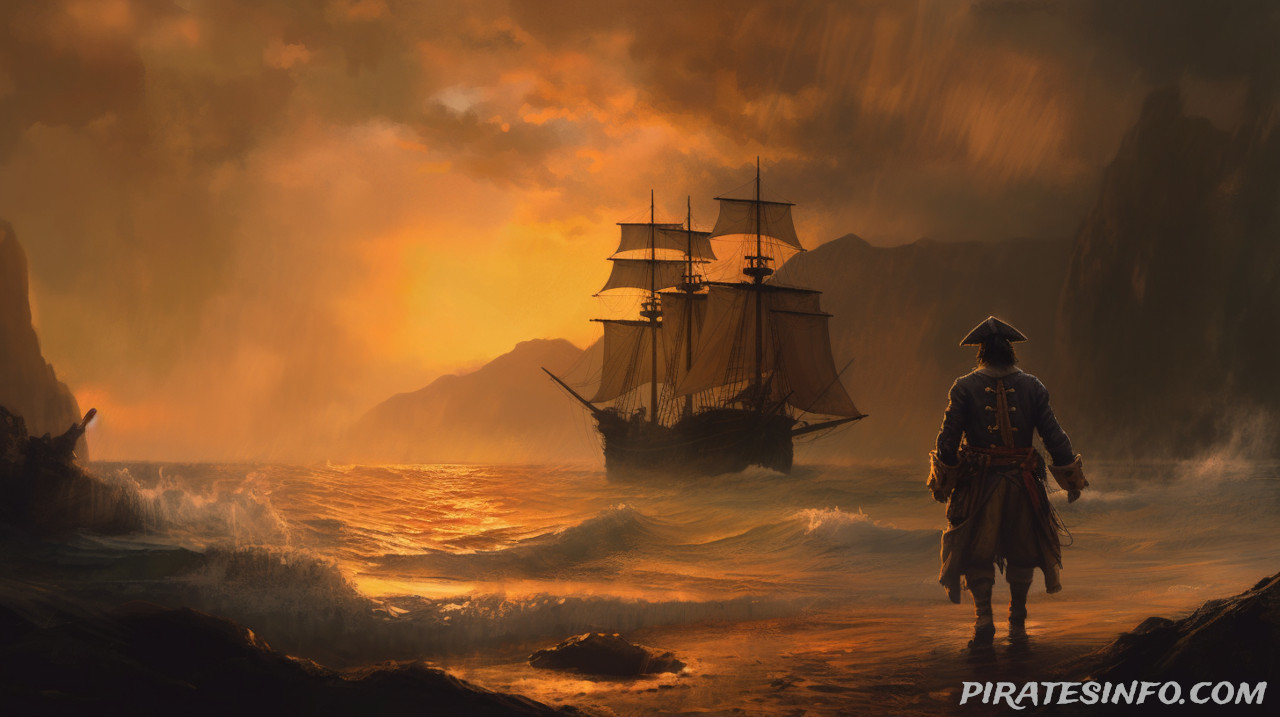
Walking the Plank: The Downfall of Piracy
Every golden age must come to an end, and the Golden Age of Piracy was no different. The tides that once carried pirates towards riches and infamy began to turn against them, culminating in the decline and eventual downfall of piracy.
The downfall of piracy was not a sudden event but a gradual process, spurred by a combination of factors. One of the primary reasons was the increasing naval presence of colonial powers. Nations like Britain and Spain had grown tired of the havoc wreaked by pirates on their trading routes and began to invest heavily in their navies. The seas that were once a pirate's playground started to become perilous hunting grounds.
In the Caribbean, the signing of the Treaty of Utrecht in 1713 marked a significant turning point. The treaty brought an end to the War of the Spanish Succession, leading to a period of relative peace and stability in the region. With no wars to distract them, the colonial powers could focus their attention on the pirate problem.
In the East, the story was much the same. The Qing dynasty in China, after years of struggling against pirate confederacies, began to gain the upper hand. Their navy, combined with internal rifts within the pirate ranks, slowly but surely chipped away at the power of the pirate fleets.
Another significant factor in the decline of piracy was the end of legal privateering. Privateering was a practice where governments issued licenses to private individuals, authorizing them to attack and loot enemy ships. Many privateers turned to piracy after the end of wars. However, the signing of the Declaration of Paris in 1856 put an end to this practice, closing yet another door on piracy.
But perhaps the biggest blow to pirates was societal change. The romantic view of pirates as rebellious heroes began to fade, replaced by the stark reality of their brutality and lawlessness. Pirates were no longer seen as roguish adventurers but as criminals who needed to be brought to justice.
Despite its downfall, the legacy of piracy lives on. Pirates left an indelible mark on our culture and our imagination, inspiring countless books, films, and legends. They serve as a reminder of a time when the world was a wilder place, and the lure of adventure could turn even the humblest sailor into a scourge of the seas.
In our final section, "Unfurling the Jolly Roger: The Legacy of Piracy," we will explore how these sea rogues continue to captivate our imagination. So, prepare yourself for the grand finale of our thrilling voyage through pirate history.
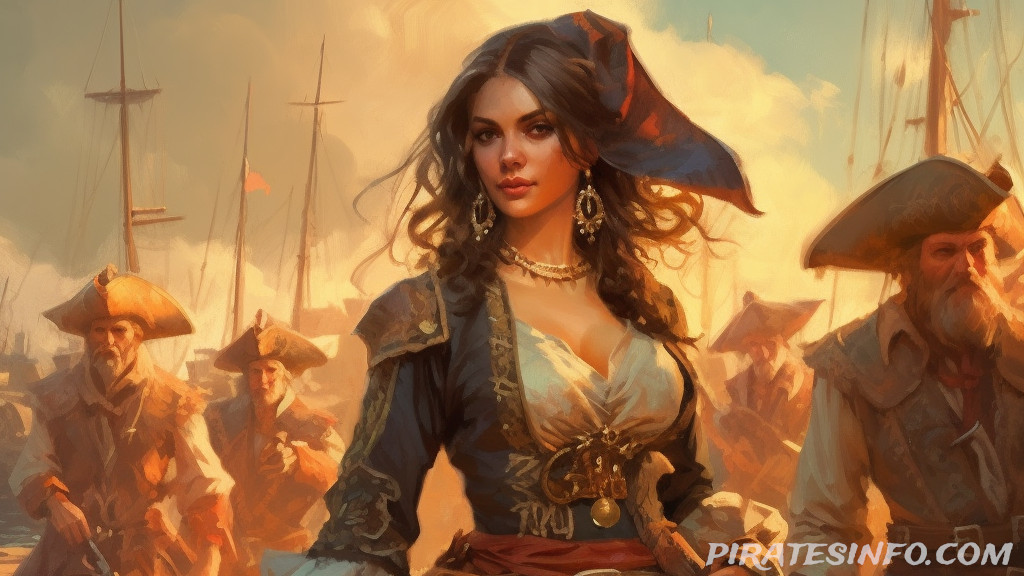
Chart a Course for More Pirates!
Ahoy, fellow adventurer! Your journey through the thrilling world of pirates doesn't have to end here. Our ship is stocked with countless more tales of daring deeds, legendary loot, and unforgettable rogues.
Whether you're eager to learn more about the notorious pirate captains, wish to discover the secrets of pirate ships, or simply want to delve deeper into the fascinating world of maritime history, our website is a treasure trove waiting to be explored.
